Among Japanese dishes, tempura is particularly memorable for its fragrant aroma and light texture.
Seafood and mountain produce wrapped in crispy batter are truly flavors that Japan can be proud of.
This page provides a wide range of information about the appeal and history of tempura, as well as some interesting trivia.
What is Tempura?
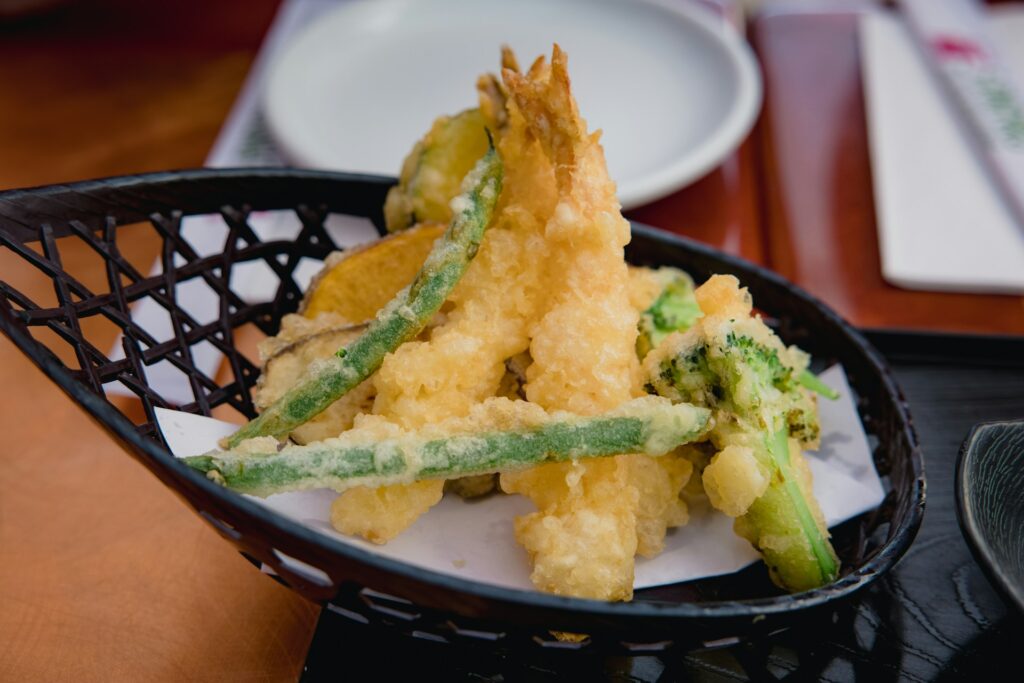
Tempura is a typical Japanese dish in which ingredients such as seafood and vegetables are coated with a batter and fried crispily in oil. Its light, crispy texture and simple cooking method, which enhances the flavor of the ingredients, have attracted attention from around the world.
Tempura often includes shrimp, squid, whiting, and vegetables like eggplant, peppers, pumpkin, & mushrooms.
Therefore, it is common to enjoy them freshly fried with tempura dipping sauce or salt.
However, it is also enjoyed atop rice as tempura rice bowls, or alongside soba or udon noodles.
Popular both as a home-cooked dish and as a fine food at specialty restaurants, tempura is one of the simplest yet most profound Japanese dishes.
TasteTune「Tempura」
Hey everyone, have you heard tastetune's song “Tempura”?
The core of tastetune lies in sharing recipes as music to introduce them to more people and help them enjoy eating more deliciously.
Here, we introduce the thoughts, expressions, and ingenuity embodied in this music.
Expressing light texture through sound: The crispy rhythm
The most distinctive feature of this song is how it uses sound to express the crispy texture of tempura.
The crispy batter crackles with a light, rhythmic pop, interspersed with tiny sounds, allowing you to almost hear the texture the moment it touches your tongue. We crafted it so you can imagine “freshly fried” just by listening.
Tradition and Simplicity: The Resonance of Instruments
The refined elegance and understated beauty inherent in tempura are reflected in the instruments used.
We kept the sound simple, avoiding excessive elements like koto, shakuhachi, or plucked strings. This allows the concept of “tempura that values the ingredients themselves” to be felt through the sound as well.
Warmth and Kindness: The Thoughtfulness Conveyed Through Sound
The warmth of freshly fried tempura and the gentle care taken when arranging it on the plate were expressed through soft, xylophone-like tones & warm resonance.
Hearing that sound conjures up a scene of freshly fried food being offered right before your eyes, and I think it makes your heart feel at ease.
Harmony of Heat and Material: The Changing Flow of Sound
Tempura is only truly complete when hot oil meets fresh ingredients.
This transformation is expressed through contrasts in volume and flow within the music. The alternating lively and calm sections allow listeners to feel the process of ingredients rising and the harmony between heat & food through sound.
Final Moments: A Quiet Afterglow
At the end of the song, I've included a quiet moment that allows for a brief pause.
This represents the anticipation when tempura is finished and placed before you, and the gratitude felt before savoring the first bite. The excitement before eating and the satisfaction afterward are captured in the final sound.
Tempura savored with the ears
This piece is more than just background music. It was crafted to let you savor the crispiness of tempura, the beauty of its ingredients, and the delicate skill of the chef—all through your ears. We designed it so you can experience the act of eating through sound. Please enjoy this “tempura of sound” to your heart's content.
History of Tempura
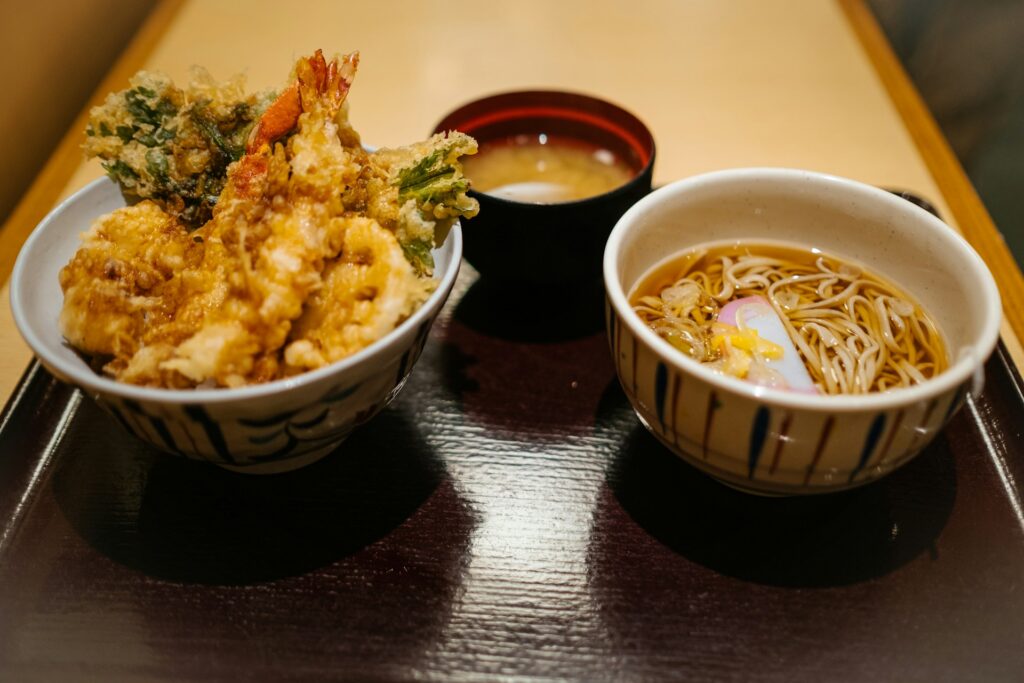
Tempura is said to have its roots in "pesche fritte" (fried fish), which was brought to Japan by Portuguese missionaries in the 16th century. At that time, it was called "Namban Ryori" and was accepted as an unusual type of Western cuisine.
In the Edo period (1603-1867), tempura became popular among the common people as yatai food. It was a kind of fast food that could be easily eaten by deep frying fish and vegetables on skewers. In Edo, tempura was enjoyed standing and eating on a street stall was a common sight.
Later, as cooking techniques improved, tempura was refined as a culinary genre. After the Meiji period, ryotei (Japanese-style restaurants) and specialty restaurants appeared, and today, tempura has become known as a luxury food that is even listed in Michelin.
Trivia and miscellaneous knowledge of tempura
Why is it called “tempura”?
There are various theories about the origin of the word “tempura.”
Among these theories, the most widely accepted one traces the origin to the Portuguese word “tempero” (seasoning, cooking method) or the Latin word ‘tempora’ (Lent). During Lent, people avoided meat and ate fish and vegetables, so the fried dishes made from these ingredients came to be called “tempura.”
In fact, the fried sound also has a meaning!
If the oil temperature is too high, it burns easily; if it's too low, it becomes soggy. That's why the sound is an important indicator.
Therefore, the cook listens for the “sizzle” sound coming from the oil to judge the temperature and the degree of frying.
What goes best with tempura? Shio?
In fact, the best way to eat it depends on the ingredients. Seafood and kakiage should be served with tempura sauce, while vegetables, maitake mushrooms, and other strong flavors should be served with salt to bring out their individual flavors.
What is different about Edomae Tempura?
Edomae Tempura is characterized by using mainly seafood and deep frying it in sesame oil to a fragrant aroma. It is a uniquely Japanese style of tempura where craftsmanship shines through.
List of tempura ingredients
Various ingredients are used in tempura, and there are many ways to enjoy it depending on the season and region. Below is a list of typical ingredients.
[Seafood]
- Shrimp, squid, sea bream, conger eel, scallops, small fish (such as megochi and shirauo)

[Vegetables]
- Eggplant, pumpkin, shishito peppers, green peppers, lotus root, sweet potatoes, maitake mushrooms, enoki mushrooms, asparagus
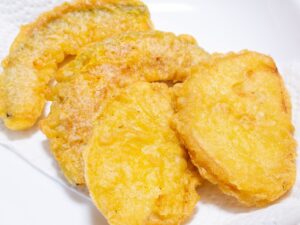
[Wild vegetables and seasonal foods]
- Tara sprouts, butterbur sprouts, fiddlehead ferns, ginkgo nuts, chestnuts
[Unusual]
- Boiled egg, chikuwa, cheese, shiso leaf, avocado, banana
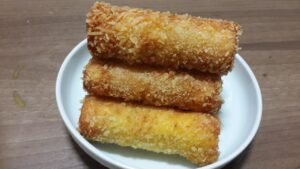
How to make tempura - Enjoy crispy tempura at home
With a few tips, you can make delicious tempura at home.
Here, we will carefully introduce everything from how to make the basic batter, to the frying process, and examples of typical ingredients.
Ingredients (e.g., tempura shrimp for two people)
Ingredients
- Shrimp (medium size): 6 pieces
- Potato starch (for preparing shrimp): Appropriate amount
- Salt: a pinch
Clothing
- Wheat flour (low-gluten flour): 100g
- Cold water (ice water): 150 ml
- Egg: 1 (beaten)
Frying oil
- Salad oil (or sesame oil blend): as needed (3-4 cm deep in the bottom of the pan)
Key points for preparation
- First, peel the shrimp, remove the vein, and make several cuts along the belly to straighten them out.
- Wipe off any moisture, lightly sprinkle with potato starch, and then wipe again to remove any odor.
- Ideally, the ingredients for the batter should be chilled in the refrigerator.
How to make clothes
- Put cold water and eggs in a bowl and mix lightly.
- Add the flour while sifting it,and mix lightly a few times(do not overmix).
Frying procedure
- Heat the oil to 170-180 degrees.
- Lightly coat the shrimp with flour, dip them in batter, and fry them in oil.
- Remove when the surface becomes crispy and the bubbles become smaller (about 40-50 seconds).
- Place on kitchen paper and lightly remove excess oil.
Tips for delicious frying
- The batter is very cold, and the oil is very hot.
- Be careful not to overcook, as this will make the flesh tough.
- Add a little sesame oil to the frying oil to enhance the aroma.
Various ways to eat
- Ten-tsuyu:Boil dashi, soy sauce, and mirin, and serve with grated daikon radish.
- Salt:A way of eating that brings out the flavor of the ingredients. Matcha salt and yuzu salt are also recommended.
- Tempura rice bowl:Pour the sweet and spicy sauce over rice for a filling meal.
Summary
Tempura is a delicate and profound Japanese dish that brings out the flavor of the ingredients.
You can enjoy it casually at home while feeling the charm of each season and region.
Please try to find your own favorite ingredients and ways to eat it.
A bite of freshly fried tempura will enrich your dining table.
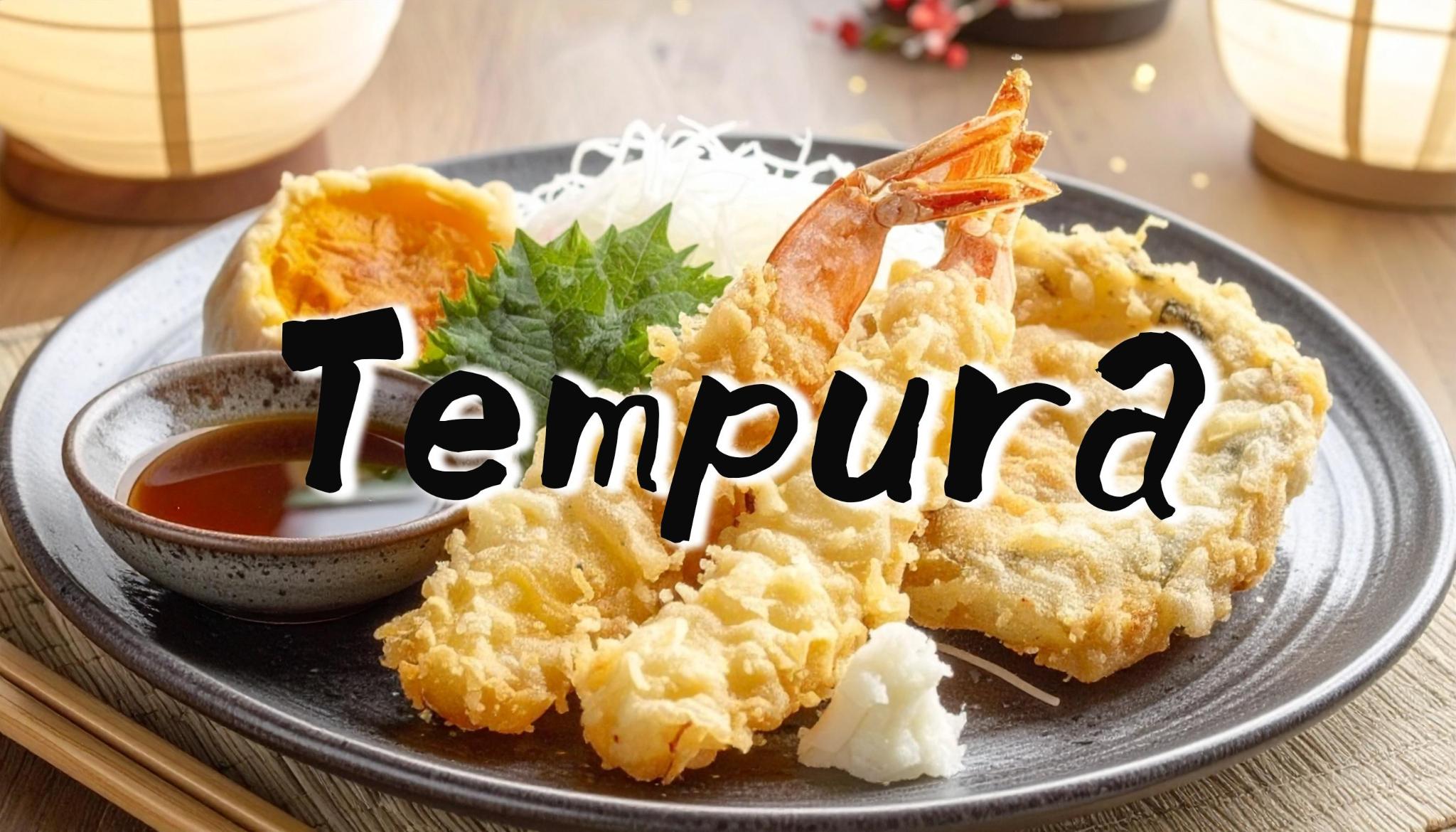
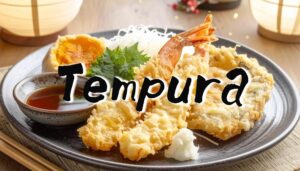




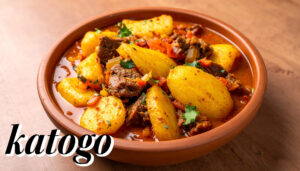



Comments